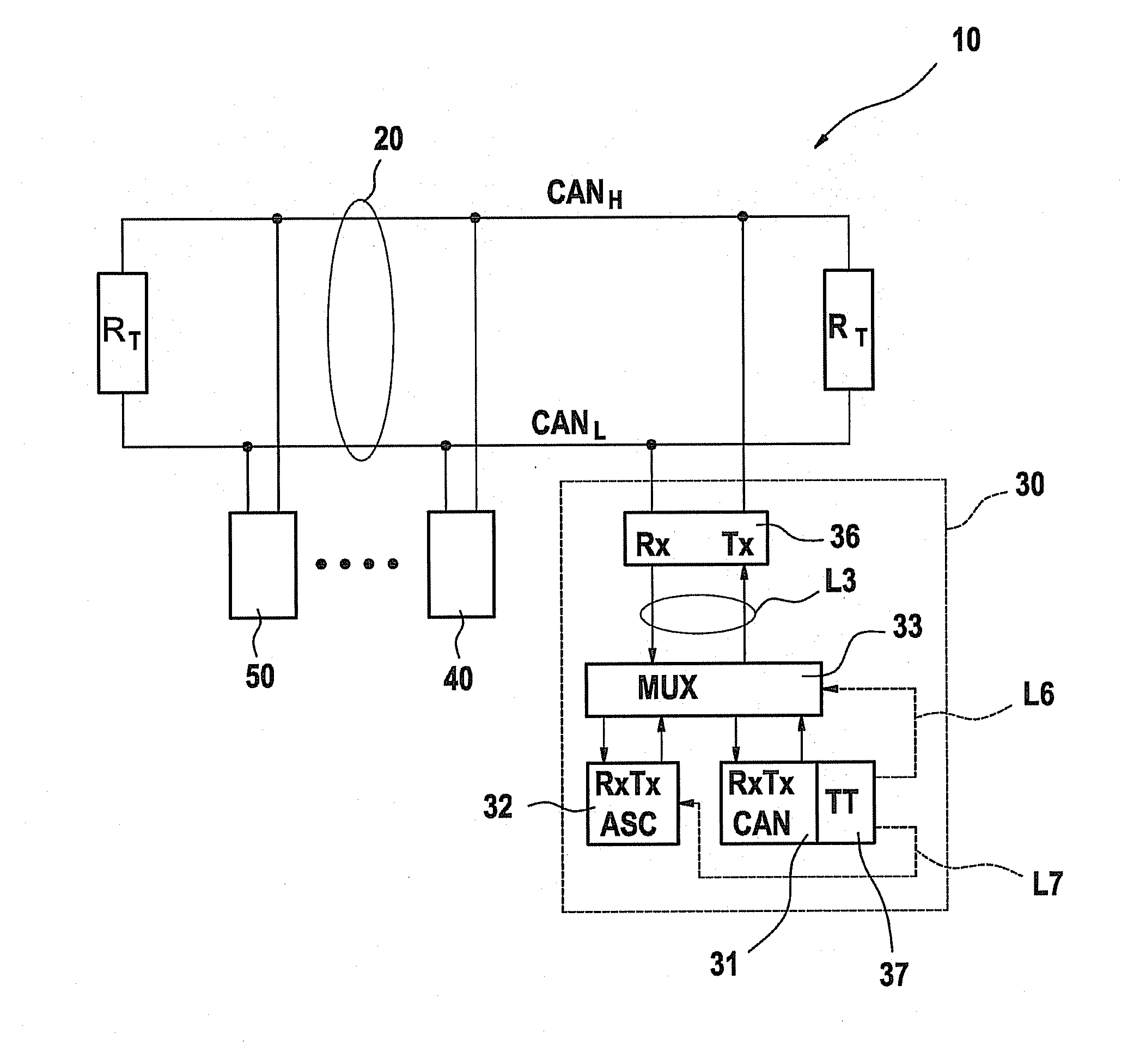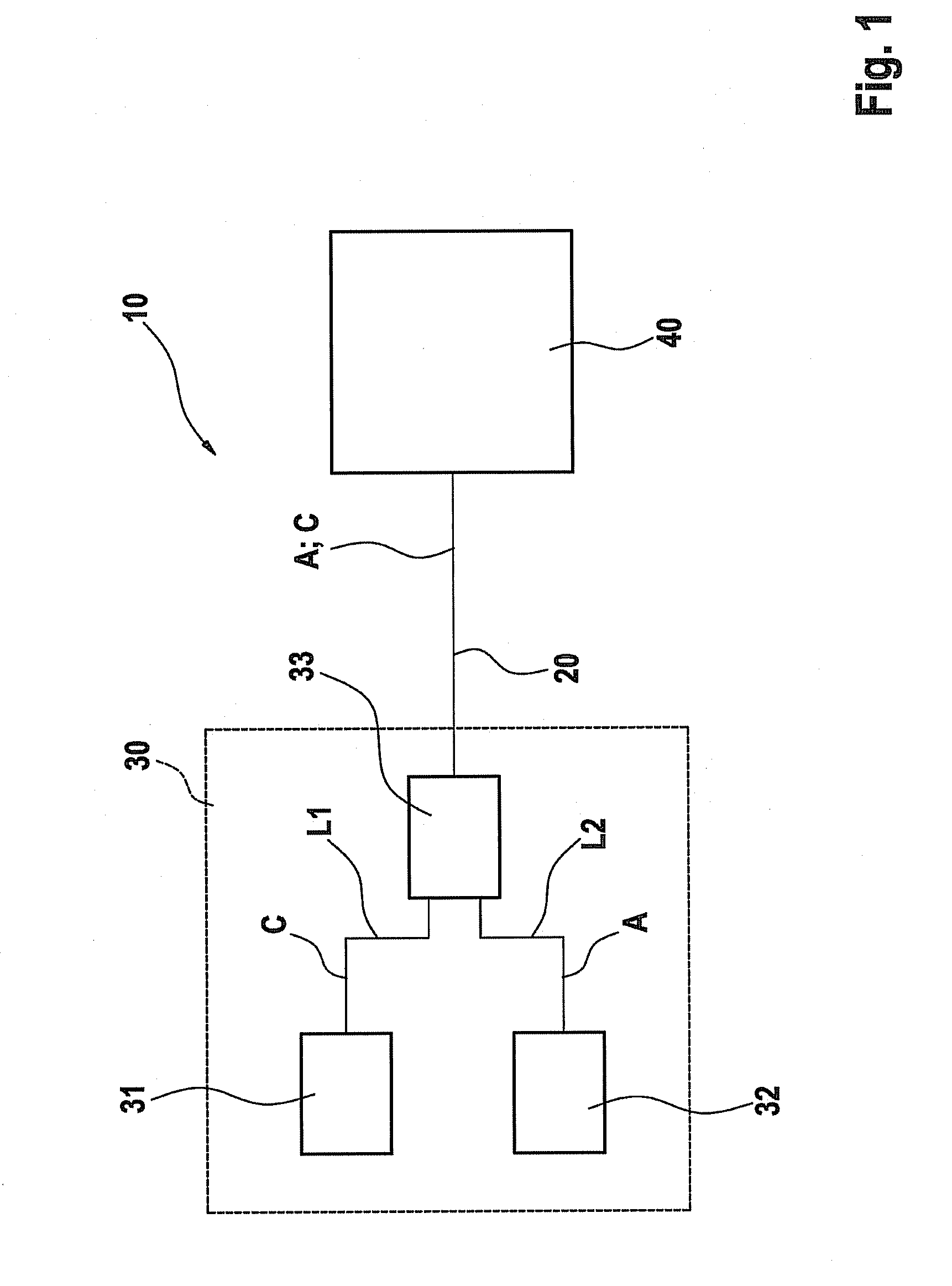Communication system having a can bus and a method for operating such a communication system
a communication system and can bus technology, applied in the field of communication system having, can solve the problems of increasing the transmission rate of can buses, affecting the transmission speed of can buses,
- Summary
- Abstract
- Description
- Claims
- Application Information
AI Technical Summary
Benefits of technology
Problems solved by technology
Method used
Image
Examples
Embodiment Construction
[0032]The same reference numerals in the figures denote the same components or those having the same function.
[0033]FIG. 1 shows an example communication system according to the present invention labeled with reference numeral 10 in its entirety. Communication system 10 includes a CAN bus 20, at least two devices 30, 40 (so-called nodes) linked by CAN bus 20 and a switch 33.
[0034]The at least two devices 30, 40 linked by CAN bus 20 include, for example, either one test device and at least one control unit or at least two control units. The test device is preferably provided in a workshop. The control devices are preferably provided in a motor vehicle. The present invention may of course also be used in other fields outside of a motor vehicle, for example, in aircraft, space vehicles, or machine tools.
[0035]In FIGS. 1 and 2, reference numerals 30 and 40, for example, denote two control units, which are designed to be identical. For reasons of simplicity, only first control unit 30 is...
PUM
 Login to View More
Login to View More Abstract
Description
Claims
Application Information
 Login to View More
Login to View More - R&D
- Intellectual Property
- Life Sciences
- Materials
- Tech Scout
- Unparalleled Data Quality
- Higher Quality Content
- 60% Fewer Hallucinations
Browse by: Latest US Patents, China's latest patents, Technical Efficacy Thesaurus, Application Domain, Technology Topic, Popular Technical Reports.
© 2025 PatSnap. All rights reserved.Legal|Privacy policy|Modern Slavery Act Transparency Statement|Sitemap|About US| Contact US: help@patsnap.com



